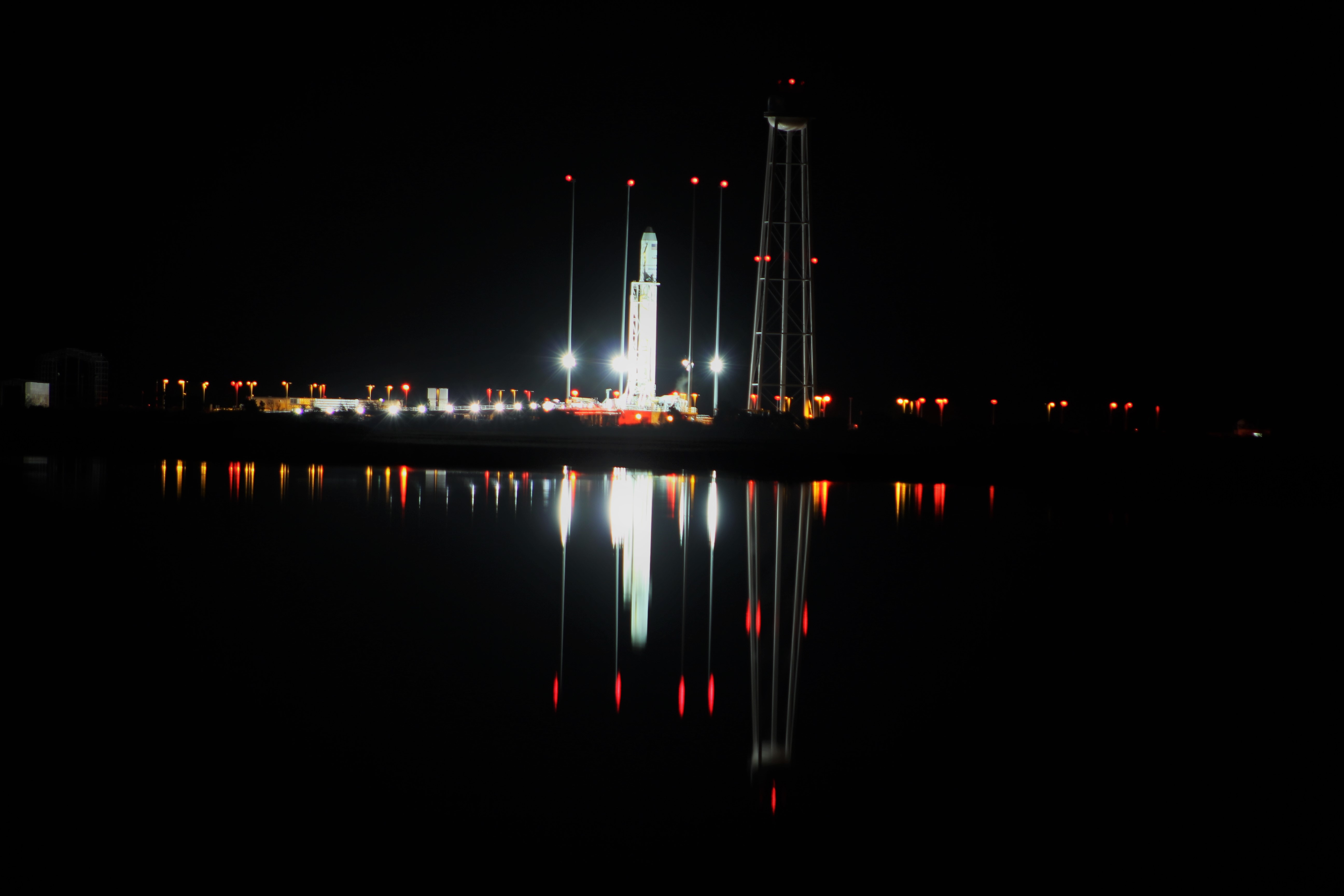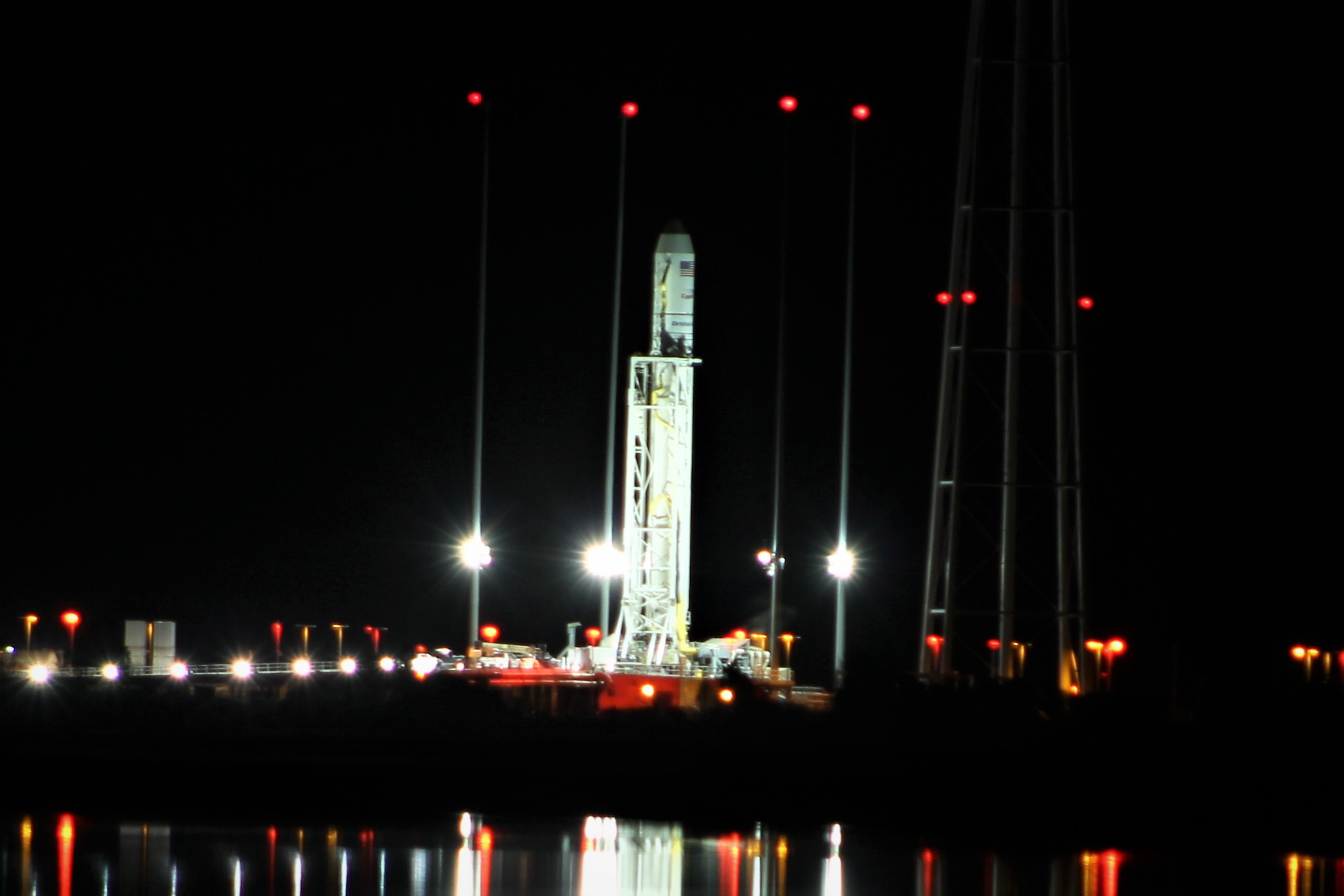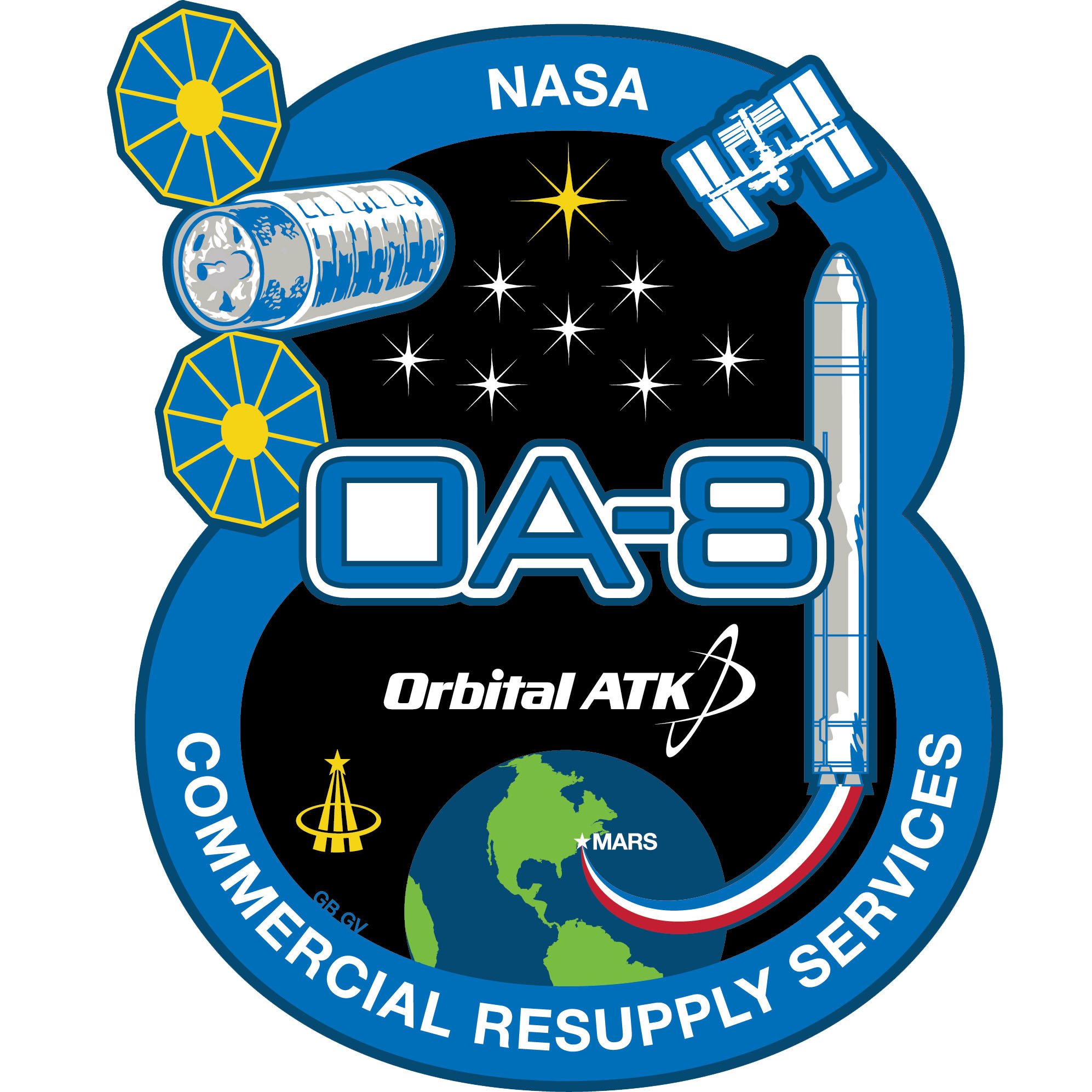
The Orbital ATK Antares rocket topped with the Cygnus OA-8 spacecraft creates a beautiful water reflection in this prelaunch nighttime view across the inland waterways. Launch is targeted for Nov. 11, 2017, at NASA's Wallops Flight Facility in Virginia. Credit: Ken Kremer/kenkremer
NASA WALLOPS FLIGHT FACILITY, VA - The Orbital ATK Antares rocket is all set for a breakfast time blastoff from the commonwealth of Virginia to the International Space Station for NASA with a Cygnus cargo freighter named in honor of Gene Cernan, the last man to walk on the Moon.
The Antares launch is targeted for 7:37 a.m. EST on Saturday, Nov. 11, 2017 carrying the S.S. Gene Cernan resupply vessel that's loaded with nearly four tons of science and supplies for the six person crew serving on the station.
Antares liftoff with the Cygnus spaceship also known as OA-8 will take place from launch Pad-0A at NASA's Wallops Flight Facility located along the eastern shore of Virginia.

The Orbital ATK Antares rocket, with the Cygnus OA-8 spacecraft onboard, is raised into the vertical position on launch Pad-0A for planned launch on Nov. 11, 2017, at NASA's Wallops Flight Facility in Virginia, in this nighttime view. Credit: Ken Kremer/kenkremer
The rocket was integrated with the Cygnus OA-8 supply ship this week and rolled out to the launch pad starting around at 1 a.m. EST Thursday morning, Nov. 9.
The Cygnus OA-8 spacecraft is Orbital ATK's eighth contracted cargo resupply mission with NASA to the International Space Station under the unmanned Commercial Resupply Services (CRS) program to stock the station with supplies on a continuing basis.
The upgraded Antares rocket was erected into the vertical position and is now poised for liftoff early Saturday morning.
Tens of millions of spectators could potentially witness the launch with their own eyeballs since NASA's Wallops Flight Facility is located within a short driving distance of the most heavily populated area of the United States along the eastern seaboard.
Since Saturdays weather forecast is quite favorable at this time this could be your chance to watch an exciting launch on a critical mission for NASA with your family or friends.
If you are wondering whether to watch, consider that Antares launches are infrequent.
The last Antares launch from Wallops took place a year ago on 23 October 2016 for the OA-5 cargo resupply mission to the ISS for NASA.
If you can't watch the launch in person, you can always follow along via NASA's live coverage.
Live launch coverage will begin at 7 a.m. Saturday on NASA Television and the agency's website: www.nasa.gov
The launch window opens at 7:37 a.m. EST.
The windows runs for five minutes extending to 7:42 a.m. EST
The 14 story tall commercial Antares rocket will launch for only second first time in the upgraded 230 configuration - powered by a pair of the new Russian-built RD-181 first stage engines.
The Cygnus spacecraft will deliver over 7,400 pounds of science and research, crew supplies and vehicle hardware to the orbital laboratory and its crew of six for investigations that will occur during Expeditions 53 and 54.
The S.S. Gene Cernan manifest includes equipment and sample for dozens of scientific investigations including those that will study communication and navigation, microbiology, animal biology and plant biology. The ISS science program supports over 250 ongoing research investigations.
"Orbital ATK is proud to name the OA-8 Cygnus Cargo Delivery Spacecraft after former astronaut Eugene "Gene" Cernan," said Orbital ATK.
"As the last human to step foot on the moon, Cernan set records for both lunar surface extravehicular activities and longest time in lunar orbit, paving the way for future human space exploration. He died in January 2017."

The Orbital ATK Cygnus spacecraft named for Sen. John Glenn, one of NASA's original seven astronauts, stands inside the Payload Hazardous Servicing Facility at NASA's Kennedy Space Center in Florida behind a sign commemorating Glenn on March 9, 2017. It launched on April 18, 2017 on a ULA Atlas V. Credit: Ken Kremer/Kenkremer.com
After a two day orbital chase "Cygnus will arrive at the station on Monday, Nov. 13," said NASA.
"Expedition 53 Flight Engineers Paolo Nespoli of ESA (European Space Agency) and Randy Bresnik of NASA will use the space station's robotic arm to capture Cygnus at about 5:40 a.m. NASA TV coverage of rendezvous and capture will begin at 4:15 a.m."
"After Canadarm2 captures Cygnus, ground commands will be sent to guide the station's robotic arm as it rotates and attaches the spacecraft to the bottom of the station's Unity module. Coverage of installation will begin at 7 a.m."
"Cygnus will remain at the space station until Dec. 4, when the spacecraft will depart the station and deploy several CubeSats before its fiery reentry into Earth's atmosphere as it disposes of several tons of trash."
Under the Commercial Resupply Services (CRS) contract with NASA, Orbital ATK will deliver approximately 28,700 kilograms of cargo to the space station. OA-8 is the eighth of these missions.

Orbital ATK Cygnus OA-8 mission patch. Credit: Orbital ATK
Watch for Ken's continuing Antares/Cygnus mission and launch reporting from on site at NASA's Wallops Flight Facility, VA during the launch campaign.
Stay tuned here for Ken's continuing Earth and Planetary science and human spaceflight news.
Ken Kremer
No comments:
Post a Comment